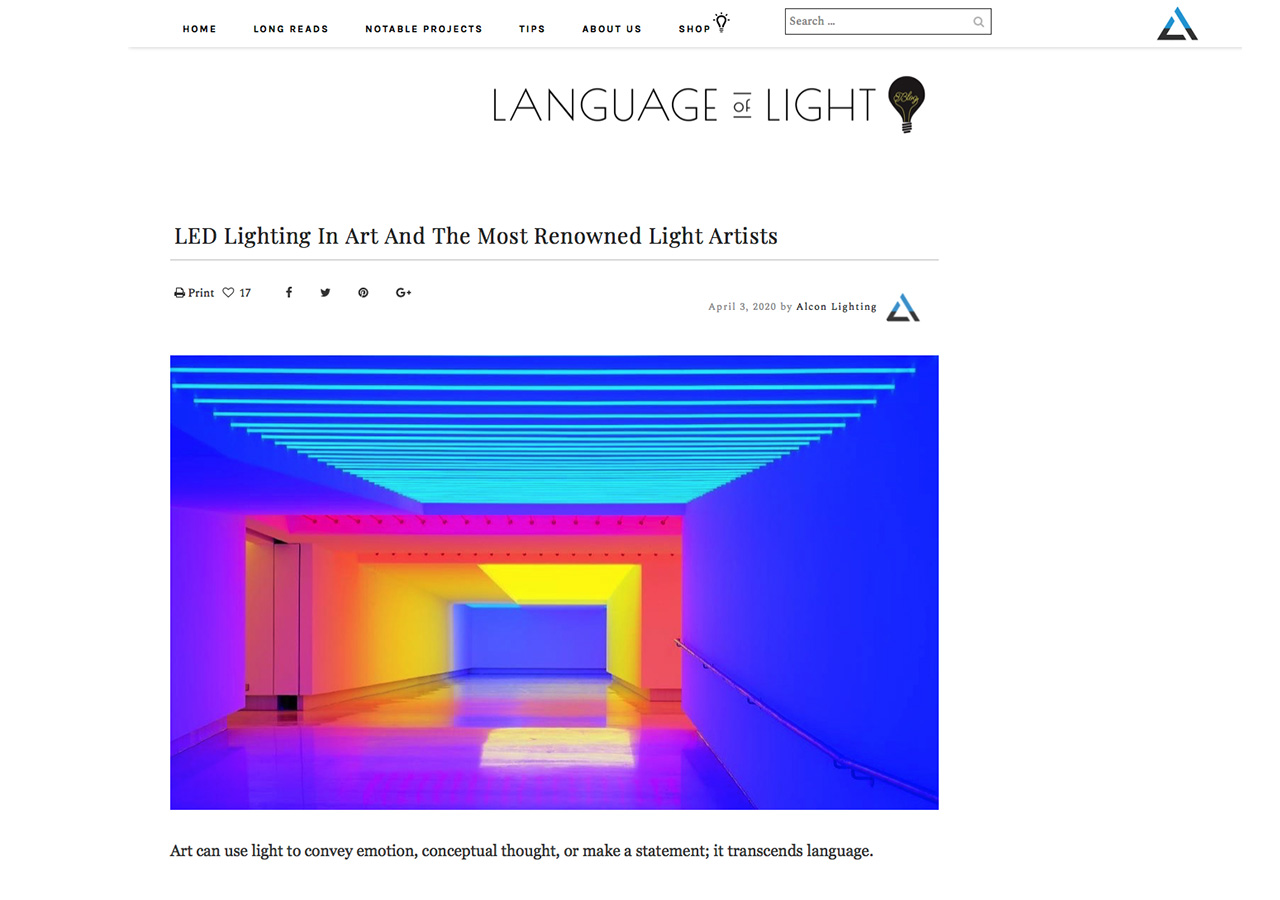
LED LIGHTING IN ART AND THE MOST RENOWNED LIGHT ARTISTS
Art can use light to convey emotion, conceptual thought, or make a statement; it transcends language.
Artists have always used light to emphasize certain aspects of their works of art. How light bathes a basket of fruit, for example, or shines on a pearl earring, can accentuate an artwork’s attributes. The contrast of darkness with lightness can be alluring. Chiaroscuro, for example, is a technique using a stark contrast between light and dark to create dramatic compositions, most famously used by artists such as Caravaggio, Rembrandt and Goya. In modern and contemporary art, only the medium has changed.
Today, some artists use light itself as art. Light art, as it’s come to be known, can take multiple media forms, including sculpture, installation, and performance. Artists can use colors, angles and shadows to create their work. You may have seen more of what’s called light art than you realize; neon signs, holographic images projected on a building, abstract light fixtures or light sculptures. Light art dominates museums as well as commercial and residential spaces, making it a prominent and accessible art form.
Light Artists
Many artists have gained notoriety using light as an artistic medium. From public space exhibitions to museum showcases, light art uses everyday encounters to express an experience, a thought or an emotion. Among artists using light:
Grimanesa Amorós
Peruvian-born Grimanesa Amorós lives and works in New York City as an interdisciplinary artist known for large-scale installations of light sculpture. Amorós first researches locations, histories and communities of her sites, and incorporates various elements from video, lighting and technology to create site-specific installations to engage architecture and create community.
James Turrell
Among James Turrell’s pieces is this installation at the Guggenheim Museum in New York, where Turrell used shape and light to immerse the visitor in purple. Turrell demonstrated here that light doesn’t have to be static or displayed on a wall — he shows that light can merely be part of an experience.
Read the full article on Language of Light website: click here. Download the article.
